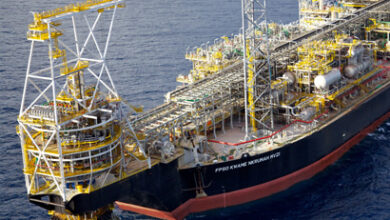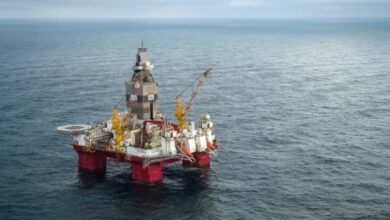Shell’s Appomattox project gains BSEE approval
Shell’s Appomattox, located in the Gulf of Mexico about 80 miles south of New Orleans, is the first high-temperature project to gain Bureau of Safety and Environmental Enforcement (BSEE) approval and begin production. The permitting work for the Appomattox project, which saw first oil in May 2019, helped define and clarify the safety requirements in BSEE’s recently published high-pressure and high-temperature (HP/HT) related guidance documents.
“BSEE’s job is to drive safety performance and environmental sustainability in all offshore energy activities,” Scott Angelle, BSEE Director, said. “The collaboration between the offshore energy industry and BSEE spurred the innovation necessary to safely pursue resources in HP/HT operating conditions.”
In the Code of Federal Regulations, high-pressure is defined as greater than 15,000 psi and high-temperature is defined as greater than 350 degrees Fahrenheit. Projects can fall within both or either high-pressure or high-temperature categories, meaning the encountered conditions can be high pressure and high temperature or high pressure or high temperature.
Shortly after taking the helm, Mr Angelle devoted his attention and staff resources to the development of guidance that made it clear to all offshore industry how to conduct safe operations in HP/HT conditions. Notices to Lessees (NTLs) are the guidance documents BSEE uses to ensure safe operations in high-pressure or high-temperature environments like the Appomattox.
Although the first HP/HT project in the Gulf of Mexico was proposed in late 2009, the Appomattox is the first to begin production.
“Having clear guidance available to all offshore operators drives safety and makes sense to ensure safe and environmentally sustainable operations,” Mr Angelle said. “In the past we had companies individually submitting data on HP/HT operations, without the benefit of a comprehensive or systematic framework for organizing and sharing that information. What we are implementing is a new approach that puts together industry experts to define the processes, procedures and standards that make up best practices, and makes that knowledge available to everyone.”
BSEE approved about 140 permits and plans covering different aspects of the Appomattox project. Because the semisubmersible platform is a major deepwater production facility, BSEE’s approval process for the structure alone occurred in three phases. It required a review by a certified verification agent, who followed the design, fabrication, and installation of the structure, then recommended to BSEE’s Office of Structural and Technical Support to accept the work.
The approximate 140 approvals included the Conceptual Deepwater Operational Plan and subsequently the implemented Deepwater Operations Plan, which together consisted of hundreds of documents. BSEE’s approvals also included 14 applications for permit to drill and 61 applications for permit to modify over three lease areas. Shell submitted pipeline segments for approval as well. BSEE approved 46 lease term pipeline segments, 14 right-of-way pipeline segments, a pipeline modification and five different pipeline risers. Pipeline risers are the portion of pipe that connects the production platform’s oil and gas separation facility from the pipelines on the sea floor. For each riser, BSEE again reviewed an agent nomination, the design, interim fabrication, final fabrication, interim installation and final installation reports before approval.
Beginning in 2017, BSEE conducted several production safety system reviews and two pre-production inspections prior to approving Shell’s production on the Appomattox platform.
“In each permit review and inspection, high-temperature conditions were factored into the approvals,” Lars Herbst, BSEE Gulf of Mexico Region Director, said. “The lessons we learned were incorporated into the newly published HP/HT-related guidance documents.”
Additional development activities related to the Appomattox project are subject to BSEE’s recently released guidance documents regarding high-pressure and high-temperature operations on the Outer Continental Shelf. The NTLs will enable other operators to also develop oil and gas resources using new high-pressure and high-temperature technologies in a safe and environmentally sustainable manner.




